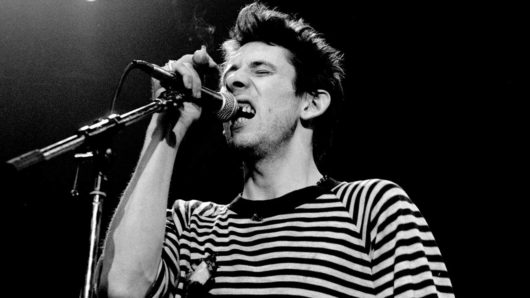Pop music was never the same after Trevor Horn’s arrival as a record producer in 1981. Having made his name as one half of the quirky new-wave act The Buggles in 1979, and following a brief but surprising spell as the frontman of prog-rock leviathan Yes, the Sunderland-born bassist and singer reinvented himself as a record producer in 1981, first with pop duo Dollar and then with the Sheffield disco-funk band ABC. Slick, sophisticated and technologically savvy, ABC’s boldly ambitious The Lexicon Of Love album (1982) introduced all the hallmarks of the best Trevor Horn productions.
Stretching out into uncategorisable sonic collages with Malcolm McLaren’s Duck Rock (1983), Horn brought the art of digital sampling into the mainstream. His next step was to create ZTT Records, which took off with a resounding bang thanks to Frankie Goes To Hollywood’s controversial dancefloor thumper Relax. The band’s debut album, Welcome To The Pleasure Dome, found Horn expanding pop’s parameters further with computer-driven rhythm tracks lit up by widescreen production flourishes.
Once described as the man who invented the 80s, Horn is a game-changing visionary who made high art out of pop records. As shown by the songs in this list of the best Trevor Horn productions, he reached levels of sophistication that have yet to be surpassed.
Best Trevor Horn Productions: 10 Songs That Shaped Pop Music
10: Dollar: Mirror Mirror (1981)
After four UK hits for the Carrere label, including the Top 5 1979 smash Love’s Gotta Hold On Me, plastic-pop duo Dollar (David Van Day and Thereza Bazar) joined WEA in 1981, where they were introduced to Trevor Horn by his wife and manager, Jill Sinclair. Fresh from dividing his time between The Buggles and prog-rockers Yes, Horn was initially reluctant to work with the pair, but quickly realised they could help develop his production palette.
The follow-up to Hand Held In Black And White, Mirror Mirror was Dollar’s second Horn-produced single, co-written by the producer with his trusted early collaborator Bruce Woolley (co-creator of The Buggles’ Video Killed The Radio Star). With its drum-machine backbeat, layered synthesiser textures and extreme stereo panning, Mirror Mirror sounded fresh and new, functioning as a prototype for many of the best Trevor Horn productions. The track, which later featured on 1982’s The Dollar Album, hit No.4 in the UK.




